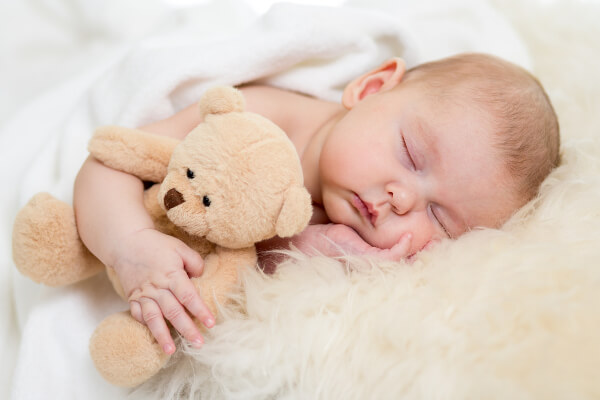6 Common Bedtime Mistakes New Parents Make

In this article, we’ll take a look at some common bedtime mistakes that new parents often make.
It’s time for your baby to go to sleep, and you have no idea whether what you’re doing is correct. Parents don’t always get things right the first time.
A proper sleep routine is important, however. Bedtime should always be a special moment.
These tips based on 6 frequent bedtime mistakes should help make it as easy and painless as possible.
If you’re a first-time mom and you’re wondering what you can do to make bedtimes easier, read on.
It’s always good to be aware of common bedtime mistakes parents make, so that you know what not to do.

Good sleep hygiene is something you can learn
Going to sleep is just another daily routine. Like everything else, practice makes perfect.
Teaching a child to get to sleep isn’t easy, but it’s very important. Sleep hygiene is key to your child’s wellbeing:
- It creates routine and gives a degree of stability. When your child knows what is going to happen next based on certain events, they feel stable and secure. As your child gets to know their bedtime routine, their emotional state will adapt to the task at hand. If your baby is in a tranquil environment at this time of the day, he or she will calm down and ease into the new sleep routine.
- Sleep hygiene gives your child autonomy. A good routine will give your child the confidence to sleep alone, first in their crib and then in a bed. You can teach your child to sleep without needing constant contact or reassurance from you. This will promote independence.
- You’ll have more time to yourself. Once your child has gotten into a bedtime routine, you’ll get a little more “me time.” With the baby asleep, you can relax for a few hours.
6 common bedtime mistakes
If you think you’re making one of these mistakes, don’t worry. It’s never too late to make changes and start to manage things better.
Be patient and, above all, trust yourself. You know your baby better than anybody else.
- Putting off bedtime. Routine is very important for babies. Try to avoid constantly changing your family’s schedule. It’s best for your baby to always go to bed at around the same time. There may be exceptions from time to time, but babies should have a regular bedtime.
- Getting the baby used to being rocked to sleep. Rocking your baby is a great way to calm him or her down in moments of distress. But when things are going well, try to get your baby to go to sleep alone. You don’t want your child to depend on being rocked in order to go to sleep.
- Too much stimulation. A baby’s crib is a place for sleeping, not for play. Too many stimuli around your baby can stop them from sleeping. It’s ok to put a baby to bed with a stuffed animal or to play relaxing sounds, but don’t turn their crib into a playroom.

- Not creating a calming routine. Before going to sleep, take some time to engage in activities that help your baby relax. A bath, massage, silence… all of this can help your baby fall asleep.
- Picking up the baby as soon as he or she cries. Of course, this doesn’t mean leaving babies to cry inconsolably. But you don’t need to pick your baby up at the first sign of a sob. Go to their crib and let your calming presence console them. If you take your baby outside of the peaceful environment you’ve created, it will be more difficult to learn the bedtime routine. Learn to tell the difference between a normal whimper and the kind of crying that might mean something is wrong.
- Changing where the baby sleeps. Your baby will appreciate it if you let them sleep always in the same place. If you put your baby to bed in their crib, then in your bed, and then on the sofa, it will be difficult to get them into a routine. Make sure your baby has an environment that makes them feel comfortable, calm and peaceful.
If you recognize any of these bedtime mistakes, try putting the tips into this article into practice. They’re sure to help everyone get a better night’s sleep!
All cited sources were thoroughly reviewed by our team to ensure their quality, reliability, currency, and validity. The bibliography of this article was considered reliable and of academic or scientific accuracy.
- Bilbao, Á. (2017). Todos a la cama: Cómo ayudar a tu bebé a dormir con amor y confianza. Plataforma.
- Jové, R. (2006). Dormir sin lágrimas: dejarle llorar no es la solución. La esfera de los libros.
- Kimelman, M., & González, L. (2013). Psicopatología del bebé. Psiquiatría del Niño y del Adolescente, 2, 337-432. http://www.psiquiatriasur.med.uchile.cl/documentos/PSICOPATOLOGIA%20DEL%20BEBE.pdf
- Ugarte Libano, R. (2011). El sueño en el primer año de vida:¿ Cómo lo enfocamos?: Presentación. Pediatría Atención Primaria, 13, 91-93. http://scielo.isciii.es/pdf/pap/v13s20/seminario01.pdf
- Zamora, T., Pin, G., & Dueñas, L. (2014). El Papel de la matrona en la higiene del sueño del futuro bebé. Introducción al sueño y claves principales en la prevención de riesgos durante el sueño del bebé. Matronas Profesion, 2014, vol. 15, num. 1, p. 28-31. https://core.ac.uk/download/pdf/71047784.pdf
This text is provided for informational purposes only and does not replace consultation with a professional. If in doubt, consult your specialist.








